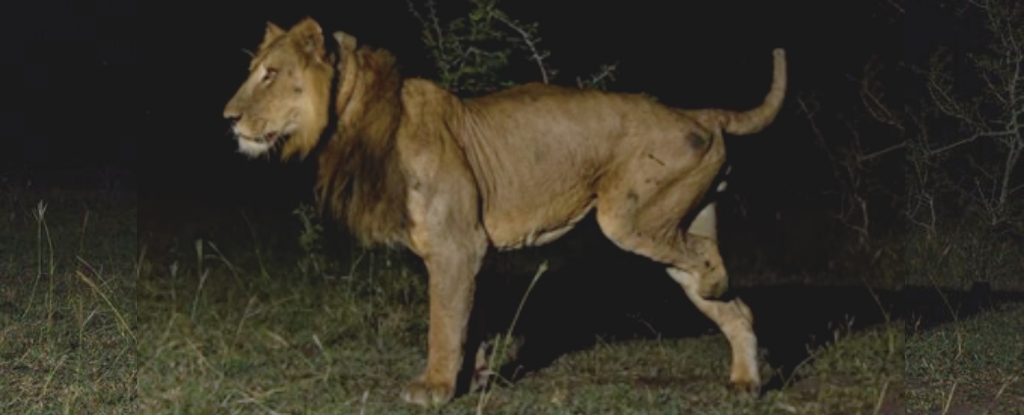Two lion brothers have been captured on video making a perilous 1km swim through a predator-infested Ugandan river, a sign of increasing human pressures that are forcing animals to take more risks.
Brothers Jacob and Tibu crossed the Kazinga Channel at night. It is the first visually documented long-distance swim for African lions (Panther lion), and that was accompanied by a few false starts.
Researchers recorded potential predators that may have been following the lion duo before they successfully ran over them. Working with the Uganda Wildlife Authority, the international team tracked their movements using heat-detecting drone cameras.
“Lions are known to occasionally prey on crocodiles and hippos, but in the water they become vulnerable themselves,” the researchers said. write in their published article.
“When crossing rivers in Africa there is a significant risk of injury or even death, for example through encounters with the much larger Nile crocodile or hippopotamus.”
Jacob is best known to local experts. The 10-year-old has survived poisoning by poachers, a gore by a buffalo, and had to have one of his legs amputated after being caught in a trap during another poaching attempt.
“His swim, through a channel filled with hippos and crocodiles, is a record-breaker and a truly astonishing display of resilience in the face of such risks,” say The study’s lead author, conservation biologist Alexander Braczkowski of Griffith University in Australia.
Watch on YouTube: https://www.youtube.com/embed/OY6s9zzH5LU?feature=oembed
“The fact that he and his brother Tibu have managed to survive for so long in a national park that faces significant human pressure and high poaching rates is an achievement in itself,” Braczkowski said. adds.
The reason for Jacob and Tibu’s adventure? Probably to find females to mate with. This is less a tale of romantic courage, though, and more a sobering story about a lion population decimated by to strip and the expansion of human activity across Queen Elizabeth National Park.
“Our scientific research has shown that this population has almost halved in just five years,” say Braczkowski.
There is indeed a road bridge that the lions could have used more safely, but conservationists believe the presence of people on and around the bridge, which is currently guarded by the Uganda Peoples’ Defence Force, would have deterred the brothers from using it.
Instead, researchers observed six times that lions chose the much riskier crossing of the lake, where crocodiles and hippos are most common.
“Competition for lionesses in the park is fierce and they lost a battle for the affections of the females in the hours leading up to the swim, so it is likely that the duo undertook the risky journey to get to the females on the other side of the channel,” say Braczkowski.
The team behind the recently documented swim says it fits in a larger whole of wild animals being forced to make difficult decisions as their options and resources become more limited – largely because of what we are doing to the planet.
This isn’t the first time researchers have seen lions swimming long distances in this area, but it is the first time they’ve managed to capture it on film. They continue to monitor lion populations in the park, including Jacob and Tibu.
“Jacob has had the most incredible journey and is truly a cat with nine lives,” say Braczkowski: “I would bet everything I own that we are looking at Africa’s most resilient lion.”
The research was published in Ecology & Evolution.

